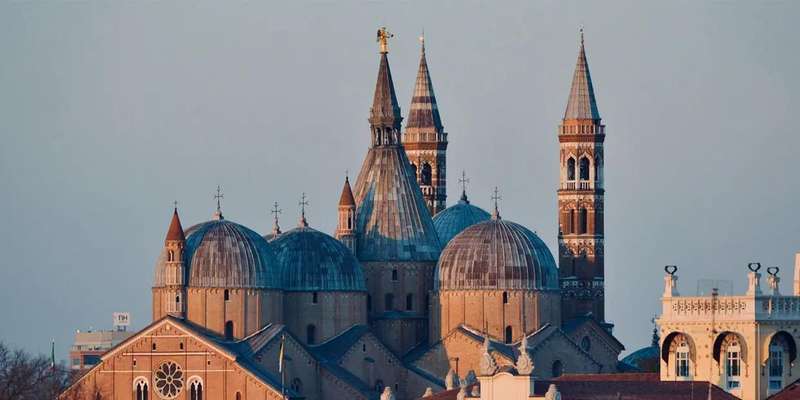- Home
- Useful Tips
- Where to find traditional...
Finding authentic Venetian masks in Padua can be surprisingly challenging for travelers. While the city sits just 30 minutes from Venice, many shops sell mass-produced imports that lack the craftsmanship of true Venetian artistry. Over 60% of visitors report dissatisfaction with their mask purchases, often realizing too late they've acquired cheap knockoffs. The frustration isn't just about wasted money—it's about missing a tangible piece of Italy's rich Carnevale heritage. Authentic masks represent centuries of tradition, with local artisans using techniques passed down through generations. Without insider knowledge, you might wander from store to store seeing the same factory-made designs, never discovering the tucked-away botteghe where masters still shape leather and apply gold leaf by hand. This search for authenticity matters because these masks aren't mere souvenirs; they're wearable art pieces that embody Venetian culture.


Why most Padua mask shops disappoint visitors
The first hurdle in your search will be distinguishing true craftsmanship from clever marketing. Many stores near Piazza delle Erbe display 'handmade' signs, yet stock identical masks shipped from overseas factories. These often feature rough edges, flaking paint, or generic designs copied from historic patterns. Authentic Venetian masks involve days of labor—layering papier-mâché, smoothing edges with pumice stone, and hand-painting intricate details. Mass-produced versions skip these steps, using molds and spray paint instead. Another red flag is unrealistically low pricing; genuine masks start around €80 due to material costs and artisan wages. Store owners may claim discounts or 'local maker' credentials, but ask specific questions about the artisan's name or workshop location. Many can't provide answers. The saddest consequence isn't financial—it's taking home a souvenir that lacks the soul and story of authentic Venetian craftsmanship.
Three hidden workshops where Padua's mask artisans thrive
Beyond the souvenir stalls, Padua harbors extraordinary mask-makers preserving traditional methods. Near the university district, Bottega del Mascheraio operates in a 16th-century atelier where the owner hand-forms masks using Renaissance-era techniques. His specialty is leather 'bauta' masks, molded on wooden forms and aged with natural pigments. For theatrical designs, seek out Atelier Antonia in the Arcella neighborhood—a family workshop creating commedia dell'arte characters like Arlecchino with hand-stitched fabric details. Their tiny showroom only opens by appointment, ensuring personalized attention. Lastly, the unassuming Laboratorio Artistico near Prato della Valle teaches mask-making classes alongside sales. Here, you can watch artisans apply 24k gold leaf to Volto masks using squirrel-hair brushes. These workshops don't advertise heavily; finding them requires local guidance or persistent exploration of side streets. Their masks come signed with the artisan's name and creation date—a mark of authenticity no imported replica can match.
When to visit for the best mask selection and prices
Timing dramatically impacts your Venetian mask shopping experience in Padua. Avoid January through February unless you enjoy crowds; during Carnevale season, prices spike 30-40% and workshops prioritize rental costumes over sales. Locals know May and September offer ideal conditions—artisans have returned from Venice's tourist season, bringing new designs without the markup. Weekdays before noon see the fewest visitors, allowing for unhurried browsing and potential customization requests. Many workshops close annually in August, so verify openings if visiting in summer. For bargain hunters, April brings unexpected opportunities; artisans often discount unsold Carnevale inventory to clear space. Should you encounter a mask you love outside these ideal windows, don't hesitate—truly unique pieces rarely remain in stock long. Some workshops keep 'secret' inventory for discerning buyers, so politely asking about special collections can yield extraordinary finds. Remember that authentic masks require 48+ hours to dry properly after final touches; last-minute purchases may mean compromising on quality.
How to verify authenticity before purchasing your mask
Distinguishing a true Venetian mask requires engaging all your senses. Genuine papier-mâché feels slightly textured—run your finger along the edge; it should show subtle layering, not plastic-smooth perfection. Hold the mask to your nose; authentic versions smell of glue and gesso, not synthetic chemicals. Check the inside for the artisan's signature or workshop stamp, usually near the eyehole. Weight matters too—traditional masks feel substantial (150-300g) due to layered materials, while knockoffs often feel alarmingly light. Ask about the creation process; real artisans will proudly explain their techniques, like using rabbit-skin glue for durability or natural dyes from madder root. Beware of sellers who can't name their suppliers or claim 'Venetian-style' rather than Venetian-made. Price remains the most reliable indicator; anything under €50 likely skipped critical craftsmanship steps. For absolute certainty, request a Certificato di Autenticità—though few shops provide these, the finest workshops include them with premium pieces. Your perfect mask isn't just an object; it's a connection to living tradition worth verifying carefully.



